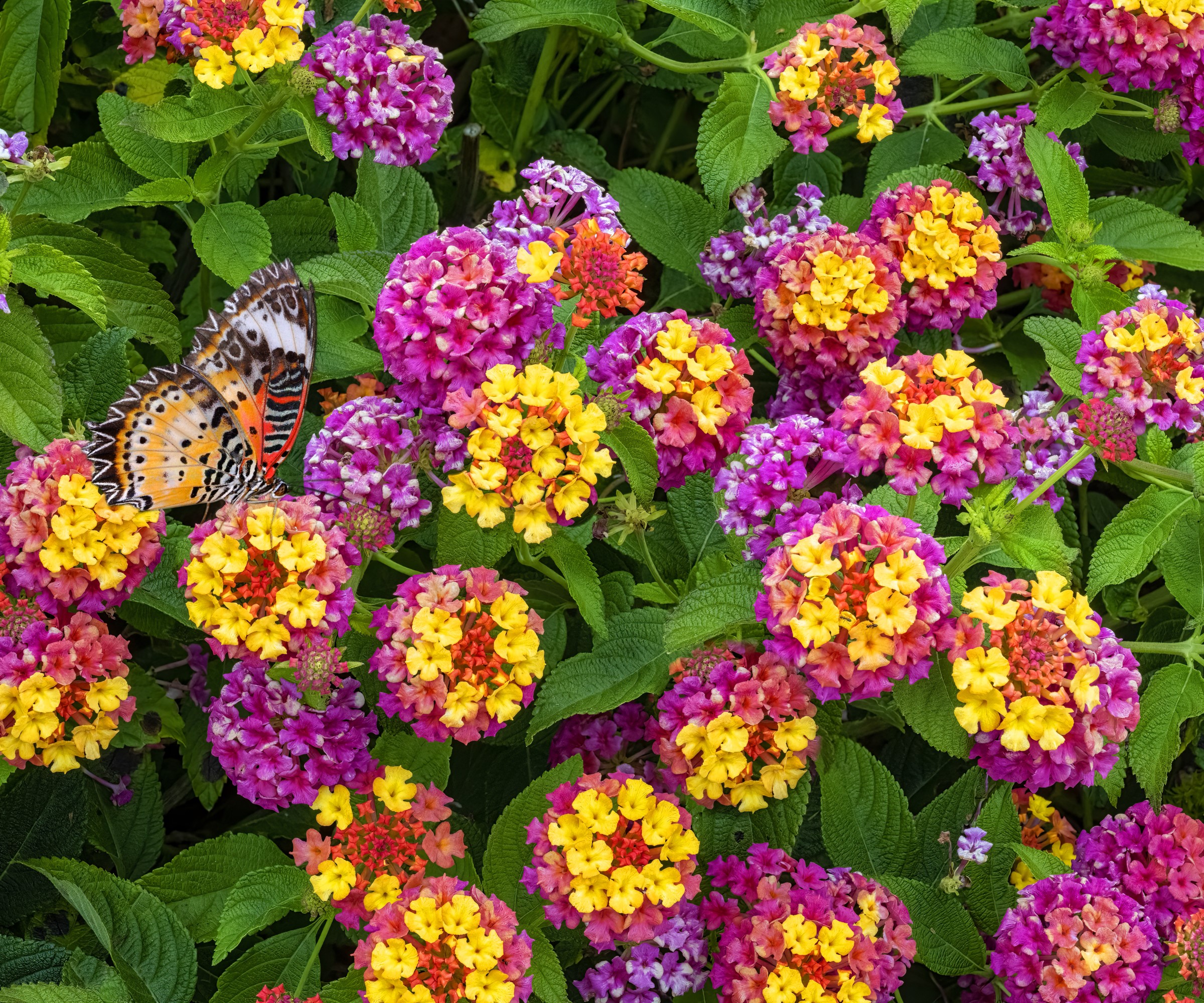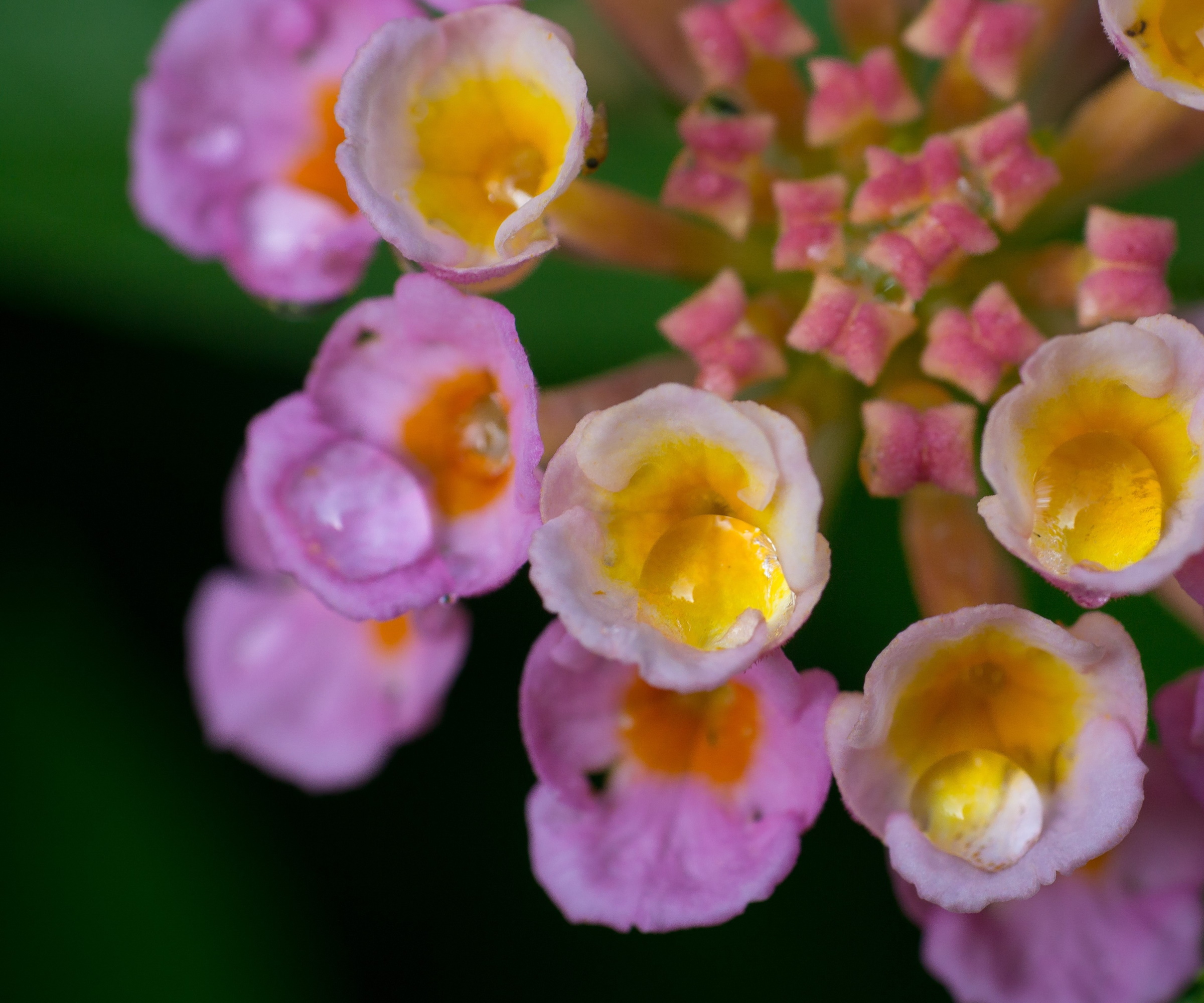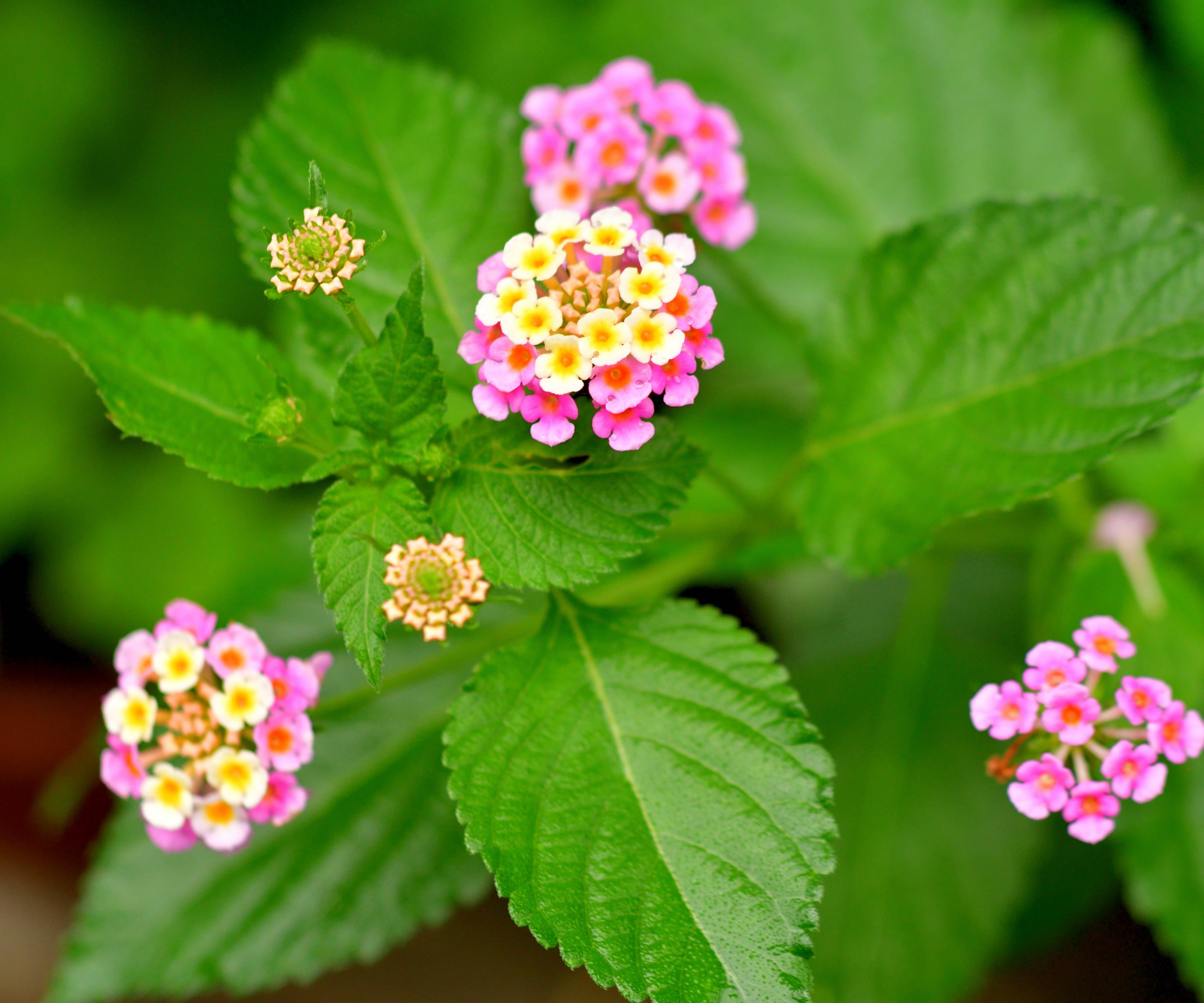How to fertilize lantana – for long-lasting rainbow blooms
Knowing how and when to fertilize lantana can help to extend the flower show in your yard


If you seek a long-flowering perennial plant that will fill your borders and containers with rainbow-like blooms from spring through to fall, lantana is the plant to grow. Celebrated for its vibrant, almost kaleidoscopic flowers, this plant is a magnet not just for us gardeners, but for pollinators too, with native butterflies, bees and hummingbirds drawn to its sweet nectar.
Native to the tropical regions of the Americas, lantana plants thrive in sunny and warm areas. Learning how to grow lantana is relatively straightforward and, when planted in a bright and protected border or sheltered and sunny pot display, this perennial can bloom for much of the year.
Lantanas are not typically considered heavy feeders. However, the occasional application of fertilizer for these native flowers can help to support plant health and ensure that bloom production keeps going for as long as possible. Here, garden experts discuss how and when to fertilize lantanas, including the best products.

How to fertilize lantana
There are many different types of lantana plants growing in a range of colors, including pink, orange, yellow and red. Most lantanas tend to grow best in sunny and warm positions, thriving in US hardiness zone 8 to zone 10, but they can also be grown in cooler regions as annuals. Whatever the species or variety, knowing how to fertilize lantana can help to extend the flowering show.
When to fertilize lantana

'Lantanas not only tolerate but thrive in the sun and heat in the south. This hard-working plant is a real winner here in Tennessee,' says Tricia Hunt, plant expert and owner of Millstone Nursery, based in Germantown, Tennessee.
These heat and light-loving plants are ideal for borders and pots in full sun, often producing blooms from April through until November in mild regions. 'You can always count on the bright blooms of lantana for a rainbow display,' Tricia adds.
'Before getting the fertilizer out, be sure that your plant is in the right place,' Tricia warns. 'There is no use trying to feed a plant back to health when it is struggling in a dark or dank spot. Lantanas need sun.'
Design expertise in your inbox – from inspiring decorating ideas and beautiful celebrity homes to practical gardening advice and shopping round-ups.
As Tricia says, applying feed will not help if your plant is in the wrong place and this is a common fertilizing mistake that many gardeners make.
'If your plant is happily growing in the right place, you can give it a boost and feed in the spring using a slow-release product, or in the summer using a bloom booster,' Tricia says.
Towards the end of summer, usually around September, it is time to stop feeding, as your plant will begin to produce fewer blooms and enter its dormant period over winter.

Tricia is the owner and operator of Millstone Market & Nursery, located in the heart of Germantown, Tennessee. Her sweet, Southern-instilled attention to customer service has grown her one-of-a-kind garden center into a destination.
How to fertilize lantana

'Lantanas prefer slightly acidic but well-draining soil,' says Lorin Nielsen, Head Horticulturist of Epic Gardening. Before applying any fertilizer, consider conducting a soil test, available from Amazon, which can help to ascertain the pH of your soil.
Much like growing hydrangeas or growing blueberries, adding a soil acidifier, available from Amazon, 'can help to slightly lower the pH level and provide ideal conditions for your lantanas,' Lorin adds.
'If you are growing lantanas in pots, using a good quality potting blend will remove the need for fertilizer,' Lorin says. 'If you do choose to use fertilizer, an organic, slow-release, balanced fertilizer at the end of the winter or in early spring is best. Do not fertilize heavily, as too much fertilizer will slow flowering in favor of foliage development.' Organic, slow-release bloom booster fertilizer is available from Amazon.
During spring and summer, you can use a water-soluble bloom booster feed, available from Amazon, which will encourage your plants to produce more flowers. Remember to follow the instructions on the fertilizer packaging and stop feeding at the end of summer.

Lorin Nielsen is the Head Horticulturist of Epic Gardening and its seed company, Botanical Interests. A California Naturalist, lifelong gardener, and plant-lover, she is a self-described composting geek, an avid food gardener, and the "plant mama" for several houseplants. She and the rest of the Epic Gardening team share a mission of teaching the world to grow, and she loves to help people discover their green thumb.
FAQs
Should I feed lantanas grown in in pots?
Yes, lantana plants grown in pots will require watering and feeding during the spring and summer. Remember that plants in containers rely on you, the gardener, so it is good to make watering and feeding a regular job as part of your summer gardening checklist.
Applying a small amount of fertilizer during the growing season can help to extend the lantana flower show, and who doesn't want more flowers in their yard? For more lantana information, see our guide on how to deadhead lantana and keep your plants looking their best this year.

Thomas is a Content Editor within the Gardens Team at Homes and Gardens. He has worked as a professional gardener for both public spaces and private estates, specializing in productive gardening, growing food and flowers. Trained in Horticulture at the Garden Museum, he has written on gardening and garden history for various publications, including The English Garden, Gardens Illustrated, Hortus, The London Gardener and Bloom. He has co-authored a Lonely Planet travel book, The Tree Atlas, due out in 2024.
